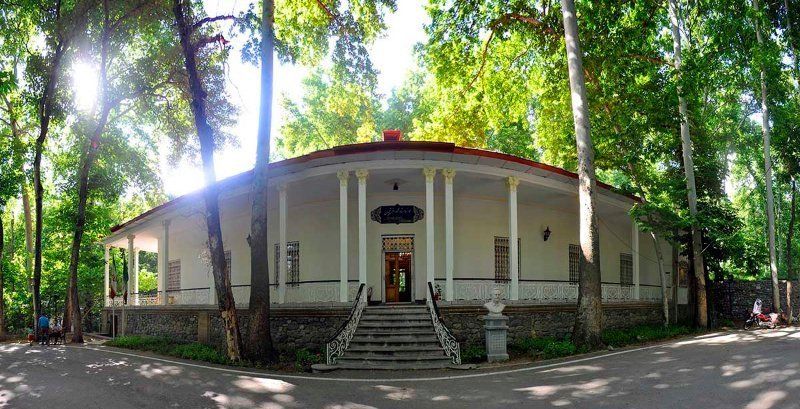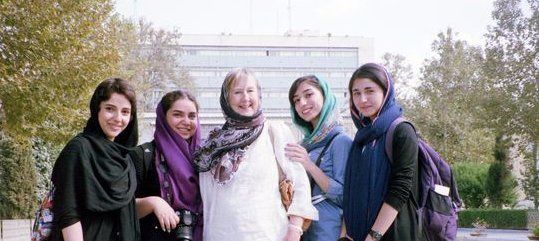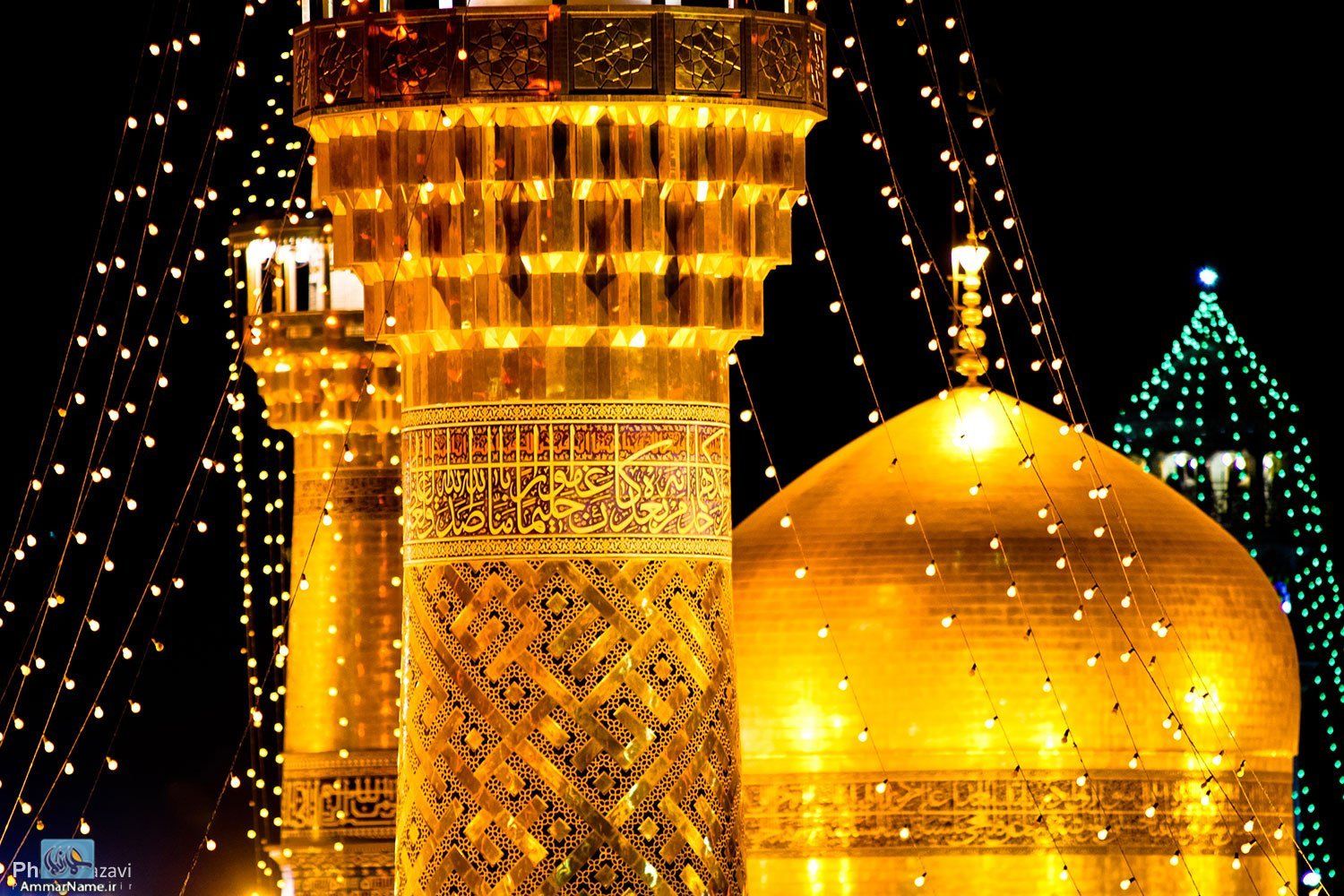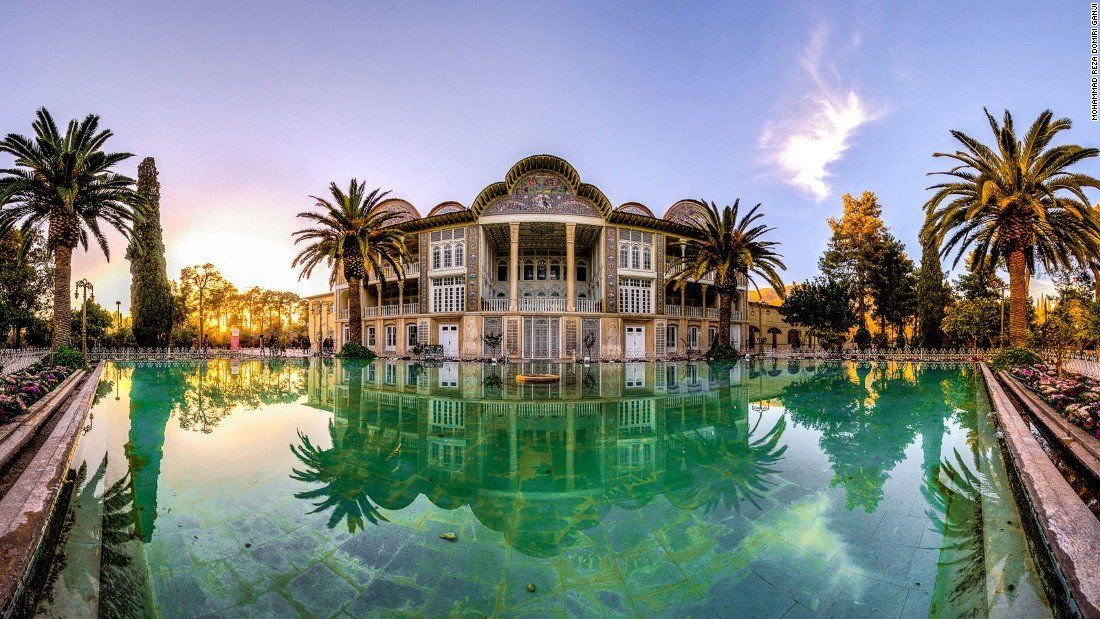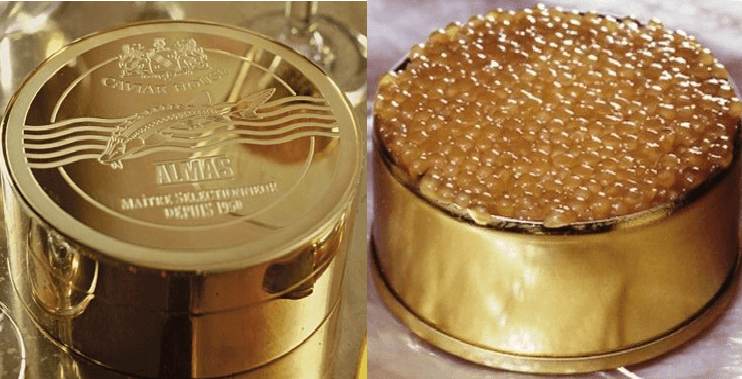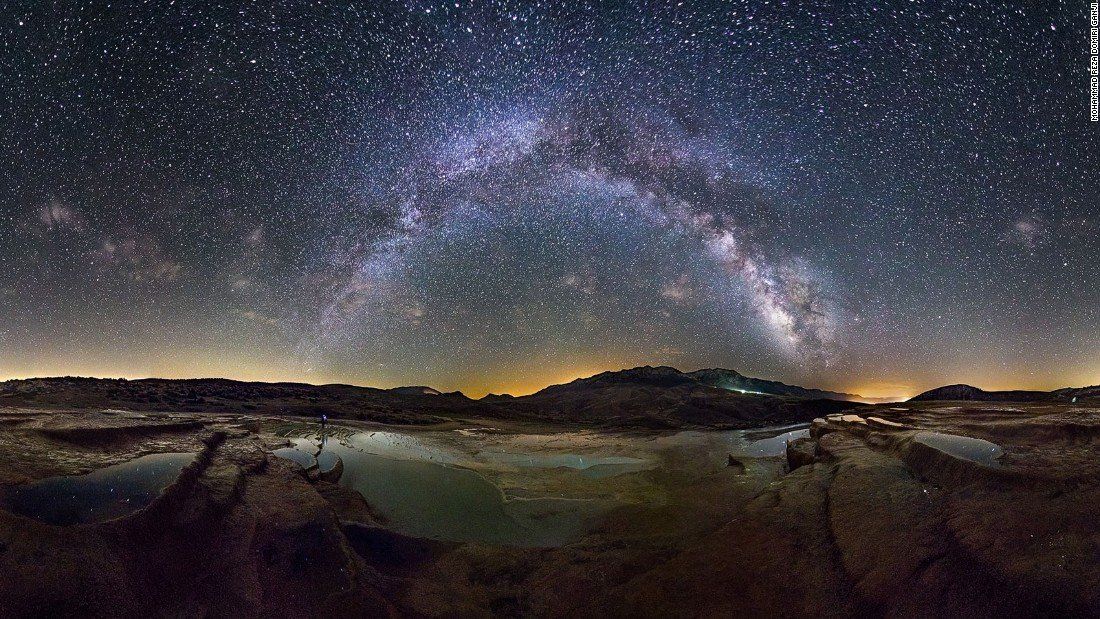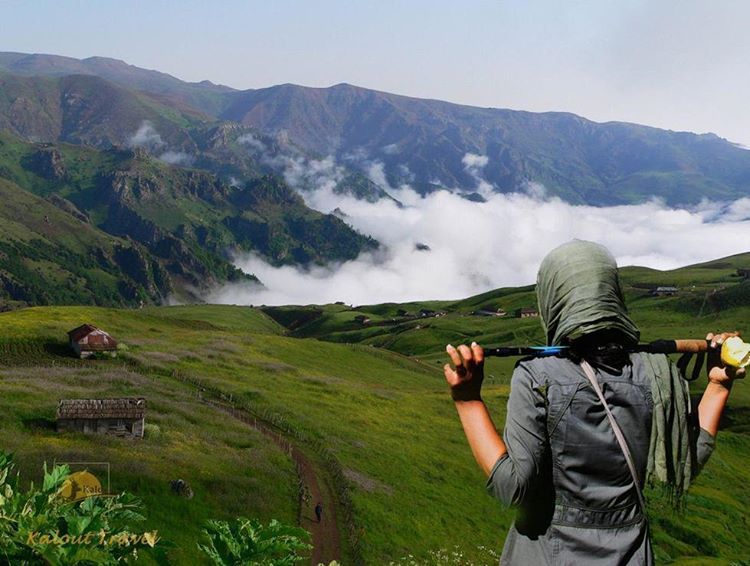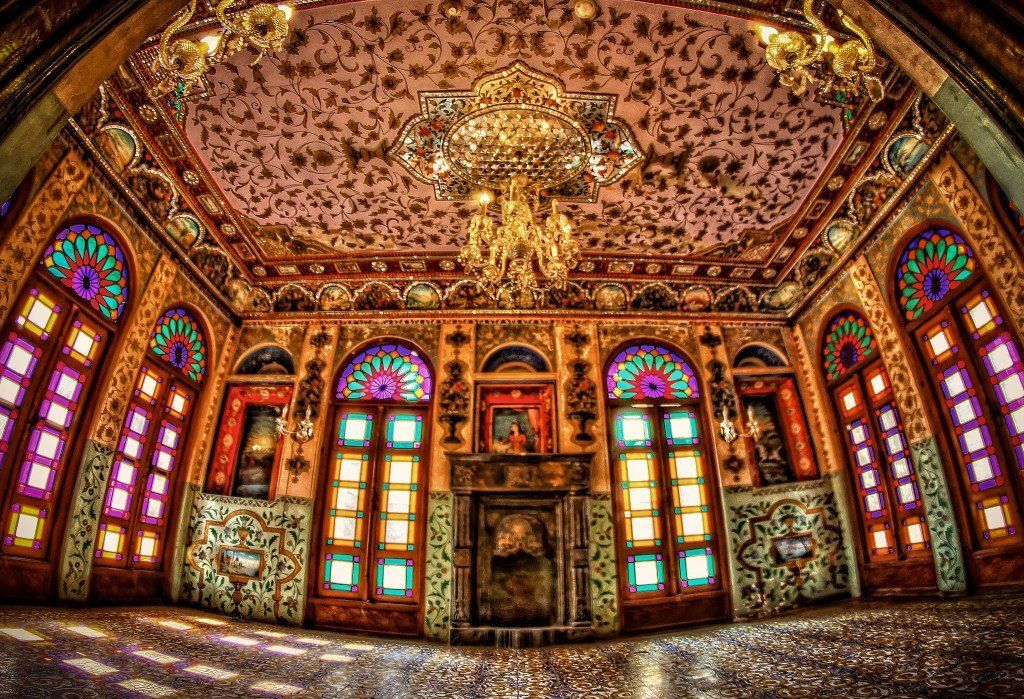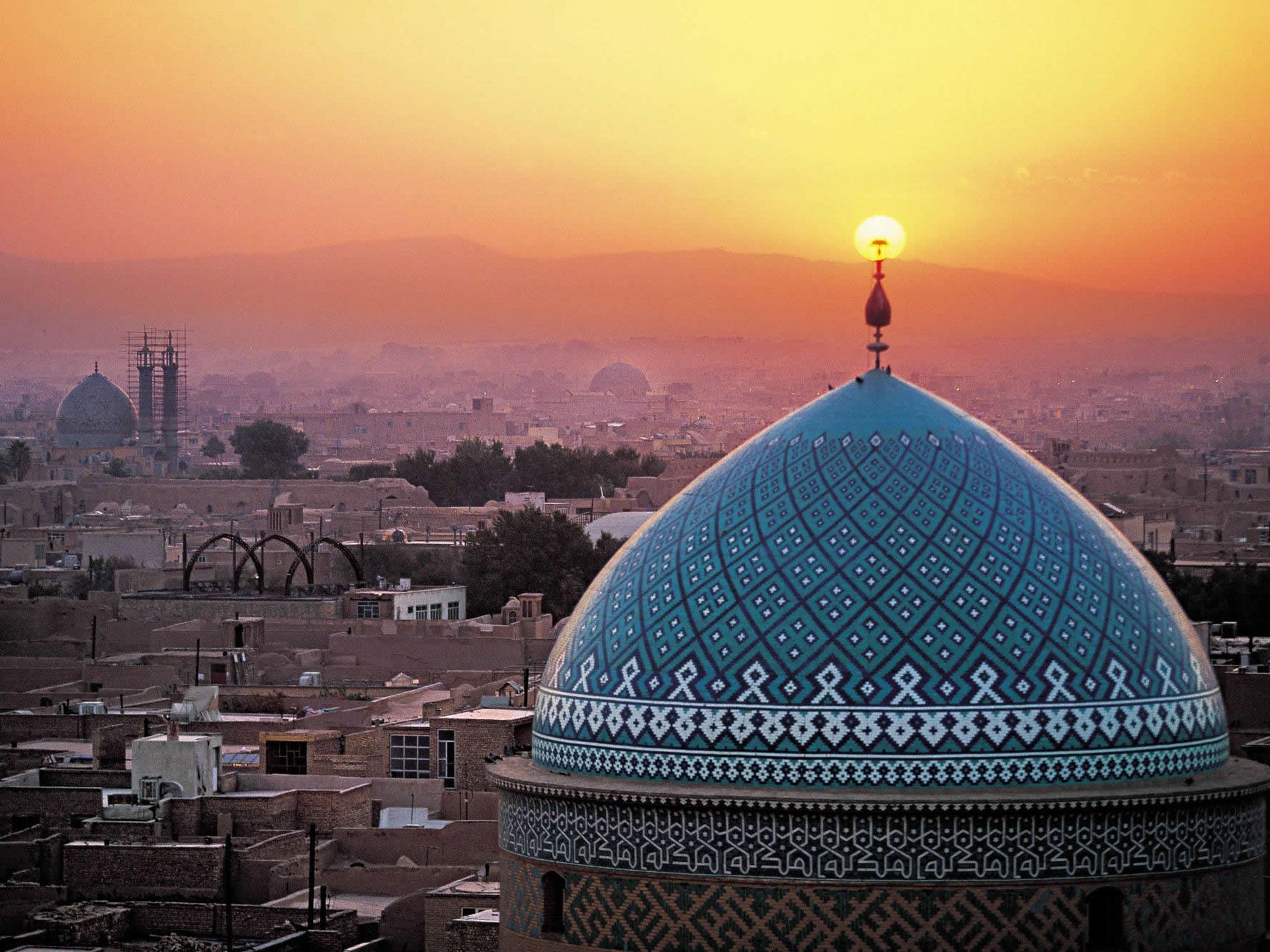Saadabad Palace
The Sa'dabad Complex (Persian: مجموعه سعدآباد – Majmue ye Sa’dābād) is a 300 hectar complex built by the Qajar and Pahlavi monarchs, located in Shemiran, Greater Tehran, Iran. Today, the official residence of the President of Iran is located adjacent to the complex.
The complex includes more than 180 hectares natural forest, streets, qanats, galleries, and museums.
The cultural and Historical Complex of Saadabad covers an area of 110 hectares and is located in the ever refreshing foothills of Tochal and Darband. Saadabad is enclosed from the north to the Alborz Mountains, from the east to Golabdare, from the west to Velenjak and from the south to Tajrish.
During Qajar dynasty (1794-1925) this area was used as the summer palace of the Royal family and after the coup of 1921 by Pahlavi, it expanded to a greater area with the addition of new gardens and became the summer residence of the kings of Pahlavi dynasty (1925-1979), Reza Shah, Mohammad Reza Shah and their families.
Later, in different occasions, numbers of palaces and mansions were added to this collection. In Pahlavi era eighteen small and large palaces were built in Saadabad which they exhibit Iranian art and architecture. Sine 1979 revolution, this complex was turned into museum. Two palaces namely Nation (white) palace and Green palace are open to the public as palace museums and other buildings with regards to their specialty have been allocated for different kinds of exhibitions.
The cultural and Historical Complex of Saadabad consists of 17 palaces, museums, and Halls.
Don't miss out the 360 degrees intreactive image below. Please grab it with a click of your mouse and move it around:
After the Iranian Revolution, the complex became a museum. However, the current presidential palace is located adjacent to the Sa'd Abad compound.
Sad Abad has 18 palaces, which 7 palaces had changed to museums .
Nation Palace:
Shah Reza summer villa
Nation Arts Museum (or Africa Museum):
Situated in Nation Museum, where Chinese, Indian's and African's Dedications to Shah, is protected
Green Museum:
Shah Reza Summer Palace
Anthropology Search Museum: Any kind of Iranian customs, related to culture and civilization of ancient Iran are showed
Military Museum:
Equipment and Weapons from Achamenian period to now
Mir Emad Museum:
Calligraphy Masterpieces of Mir Emad and his period other calligraphists
Abkar Museum:
Klara Abkar Paintings
Behzad Museum (miniature):
Hossein Behzad Paintings
Fine Art Museum:
18th & 19th century European Paintings
Water Museum:
Keeping, restoring and revenue operation of water in Iran
Nation Palace
In two stories, different small and large rooms were served as residence and office of Reza Shah Pahlavi and his son. Rooms were used as sitting room, waiting room, reception hall, dinning hall and bedroom. There are some works of art like figurines and chinaware are kept in showcases. Furniture, chandeliers and paintings are European made. There are four big mural painting the subjects of which are Iranian myths.
Nations museum:
This collection consists of various works of art purchased from other countries and represents the civilizations of pre-Islam Iranian, African, Indian, far east, Eskimos, Mayas and contemporary arts of Iranian as well as non-Iranian artists.
First floor
Was built in 1932 for Mohammad Reza Shah. Rooms are covered with valuable rugs as follows:
1-Ground floor lobby: Whole silk Kashan rug, 63 sq. m. and whole silk Kerman rug in three section.
2-Living room: 121 sq. m. Kerman rug (Arjmand workshop), medallion corner design.
3-Dining room: 86 sq. m. Kerman rug, Abbasi flower design.
4-Wating room: 56 sq. m. Kerman rug, Medallion Arabesque design.
5-Working room: 73 sq. m. Kerman rug, Medallion corner
Second Floor
Farah bedroom: 75 sq. m Kerman rug (70 wales), medallion corner; and a small pictorial rug with Sheik Sana'an and Christian girl portrait.
Dining room: 145 sq. m. Meshed rug (Amu Oghli workshop), Flower Arabesque design, related to Sheikh Safi Ardebili design, 16th century.
Ceremony Hall: 143 sq. m. Meshed rug, medallion two Vase design.
Living room: 51 sq. m. Meshed rug, medallion corner.
Bedroom: 55 sq. m. Kerman rug, Shah Abbasi, medallion corner.
Lobby: 73 sq. m. Yazd rug. There is also, some coral and ivory decorative things. Around, some color paintings 350 × 810 cm. are found, with epic poem subjects. In north and south side, Bahram Gour in hunting, in west, Rostam and China Emperor fight, which are painted by Hossein Taherzadeh Behzad in 1941.
In this palace, also found, valuable furniture, porcelains and candelabrums, which are mostly dedicated by foreign countries.
Green Palace
It is the first palace built in the complex during Pahlavi dynasty by Reza Shah's order. The building is called green palace because of the color of its fa'de. The palace is a very nice museum of Persian arts like mirror marquetry, carpets, and illumination and plaster work. It was served as Mohammad Reza's private palace where some private meetings were held before the Islamic Revolution.
Green palace was built during six years (1922 to 1928) in Reza Shah period, by Jafar Kashani. This palace is covered with three different stones:
1) Isfahan green stone
2) Khamseh Zanjan in middle
3) Italian stone for columns
And have two stages:
Waiting room: 70 sq. m. Kerman rug (70 wales), Shah Abbas design, Silver and gold tissue curtains, with a harmony between carpet, plaster-molding and mirror work.
Reza Shah working room: By a valuable rug, called Zelleh Soltan, 40 sq. m. Tehran rug (30 wales) ,medallion corner (Botteh) flower design is covered. Walls are decorated by Behzad paintings.
Ceremonies Hall: 80 sq. m. Meshed rug (120 wales) flower Arabesque design, and the best kind of mirror works on wall and ceiling .
Reza shah Dinning room: 40 sq. m. Yazd rug (40 wales), Arabesque design, with Behzad paintings on wall.
Corridor: Walls are covered by French Cashmere. Personal Facilities of Reza Shah are placed to be shown.
Reza Shah Bedroom: 4 sq. m. Sarough (Arak) rug (100 wales) medallion corner design covered the floor. Plaster-molding, mirror works and rug have a uni-design.
Living room: Two carpets cover the floor:
1)12 sq. m. (70 wales) Sheik Lotfollah Dome design
2)Isfahan small rug, flower Arabesque design.
Ceremony Hall: Here, find many decorative foreign things; the best is a silver vessel with 110 kilogram weight.
Fine arts museum
The major part of the paintings in this collection are the oil paintings of Safavid, Afshar, Zand and Qajar periods collected by Mohammad Reza Pahlavi?s last wife, Farah, from an English collectioner called Harold Emmer. The paintings have been arranged on 3 floors: 1) First floor, tea-house painting by contemporary Iranian artists, 2) second floor, various historical periods paintings mentioned above, and 3) Third floor, European works presented to Farah or bought by her.
Behzad museum
This museum is devoted to the miniatures painted by Hossein Behzad (1895-1968) who made a revolution in Iranian painting. Studying European art and being inspired by Kamal-ed-din Behzad and Reza Abbasy, he introduced a new style of miniature on paper, hard paper or fiberboard. This style is purely Iranian, but it has kept on with its contemporary paces and changes of art in universal art schools.
Abkar museum
The miniatures in this museum are works of a 20th century artist called Klara Abkar who had her particular style in painting. Her source of inspiration was the rich Iranian literature and mysticism. Her works take the visitors to a world of spirituality and a poem-like or light-music-like harmony that give everyone's eyes peace and tranquility.
Mir Emad museum
The main subject of this museum is the most prominent post-Islam Iranian art namely calligraphy. On paper and parchment, there are plenty of various calligraphic styles of writing belonging to 10th to 19th centuries. Mir Emad, himself, the most well known 18th century?s calligrapher, has been introduced by his works. In some cases, some calligraphy-related arts like illumination, painting, etc are exhibited.
Museum of anthropology
The lifestyle and customs of Iranians through the history are displayed from cultural perspective. In a vast area and of two floors, various objects are exhibited like tools for irrigation, agriculture, husbandry, fishing and hunting as well as agricultural documents, clothes, lighting tools and handicrafts.
Water museum
This museum in an exhibition of ancient and traditional techniques and instruments for water supplement and distribution. Various water-related vernacular structures are introduced like water reservoirs and traditional ice-houses. Some ancient water dams and royal orders concerning them are presented as well.
Military museum
The objects of the museum are displayed on two floors. The military uniforms of Achaemenids up to the present time are exhibited. The weaponry on display consists of some unsophisticated ones used in the ancient times until the firearms period?s. Part of the history of Iraqi-imposed war against Iran (1980-1988) is also exposed to visitors.
Rojat Palace
Ebrat Palace (Mother)
Vessels Museum (Ashraf Palace)
Dafineh Museum
Farideh Diba Palace
Narural History Museum
And others which are not museum:
1. Shahram Palace
2. Prince Palace
3. Leila Palace
4. Farahnaz Palace
5. Hamid Reza Palace
6. Gholamreza Palace
7. Nasiri Palace
8. Twin Ghajar Palace
In west of this big Palace, a pottery workshop and in south a painting workshop are placed.
Address: N0 50.- Kamal Taheri St.- Za'feraniyeh- Vali'Asr Ave.- Tehran,Iran
Tel: +98 21 222823031-3
Website: www.saadabadpalace.org
























